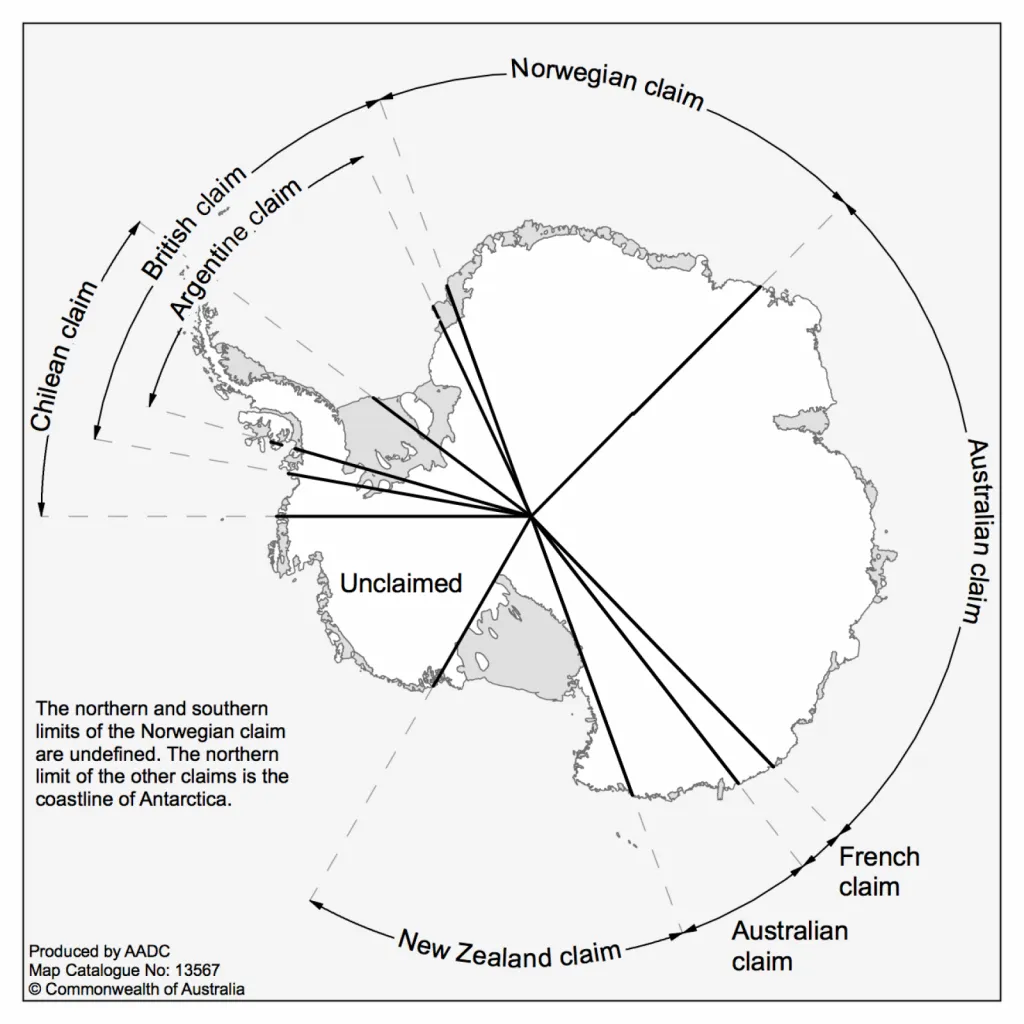The snowy white landscape of Antarctica is far from the terrain we are used to seeing on continents across the world, yet it is still considered to be the 5th largest continent. So, why, is Antarctica a continent?
Antarctica is a continent because underneath all of the ice and snow is a landmass that sits on the Antarctic tectonic plate. It has characteristics of a continent including its size, unique geography, and vegetation. There are no countries in Antarctica, instead, it is governed by The Antarctic Treaty.
Keep reading to find out more about how we define continents and why Antarctica is considered to be one, plus information about the countries that govern it.
Why is Antarctica a Continent?
Watch the video version here, or scroll down to keep reading below:
Let’s begin by answering the question of what is a continent because this in itself poses some difficulties.
The basic definition of a continent is generally considered to be “large, continuous, discrete masses of land, ideally separated by expanses of water”1 (source: The Myth of Continents, M. W. Lewis and K Wigen, 1997).
However, with no specific criteria regarding size and amount of separation, scientists also look for other features when defining continents.
These will typically include being on separate tectonic plates, geological distinction (different terrain, plants, and animals), and anthropological distinction (different people and cultures)2 (source: Britannica).
There are widely considered to be 7 continents: Asia, Africa, North America, South America, Antarctica, Europe, and Australia.
Antarctica is a continent because underneath the ice and snow is a large, continuous landmass. This landmass sits on the Antarctic tectonic plate and has the characteristics of a continent such as being surrounded by ocean and being geologically distinct from neighboring continents.
Mapping of the land under Antarctica by scientists suggests it contains mountain ranges, gorges, and valleys, much like any other continent on Earth3 (source: British Antarctic Survey).
Although most of Antarctica is an ice-covered desert, some parts have vegetation but this is mostly lower plant groups that have adapted to extreme climates such as mosses, liverworts, lichens, and fungi4 (source: British Antarctic Survey). This vegetation is distinct from other continents.
Of course, then there are unique animals that can be found in Antarctica and not on other continents, such as the emperor penguin and leopard seal.
Why is Antarctica a Continent but the Arctic is Not?
Antarctica is a continent because it is made up of a single landmass that lies beneath the ice whereas the arctic is mostly ocean with sea ice on top.
Parts of other continents do form part of the arctic as they protrude north of the arctic circle such as North America, Europe, and Asia.
However, there is no land under the north pole whereas there is land under the south pole in Antarctica.
Is Antarctica an Island?
No, Antarctica is not an island because it is a continent and a landmass cannot be both an island and continent.
However, both have very similar definitions and can be hard to define. One question we get asked a lot is “why is Greenland an island but Antarctica is a continent?”.
This is a good question because Grenland is also an ocean-covered landmass similar to Antarctica.
However, Greenland shares a tectonic plate with North America and is geographically quite similar with very few unique species of plants and animals5 (source: NASA).
Then there’s the factor of size. Antarctica is 14.2 million km² whereas Greenland is 2.166 million km². Greenland would fit into Antarctica at least 6 times.
What Countries are in Antarctica?
There are no countries in Antarctica and no single nation owns the continent. It is governed by The Antarctic Treaty that came into effect on 23 June 1961.
The treaty was established by twelve countries who were active in Antarctica at the time: Argentina, Australia, Belgium, Chile, France, Japan, New Zealand, Norway, South Africa, the Soviet Union, the United Kingdom, and the United States.
However, it has since been agreed to by 54 countries6 (source: US State Department).
The main goals of the treaty are:
- to demilitarize Antarctica and ensure it remains peaceful.
- to promote international scientific cooperation.
- to set aside previous territorial claims.
Source: British Antarctic Survey
Territorial Claims in Antarctica
Between 1840 and 1940, seven sovereign states made territorial claims in Antarctica, these are Argentina, Australia, Chile, France, New Zealand, Norway, and the United Kingdom.
Whilst most of these states respected each other’s territory, there were some overlapping claims.
Other countries without claims such as India and the United States constructed study facilities in territories claimed by other nations.
However, following The Antarctic Treaty (see above), the states agreed to set aside these claims.

Related Questions
Which Continent is Closest to Antarctica?
The closest continent to Antarctica is South America which lies 1,238 km north of the Antarctic peninsular7 (source: Australian Antarctic Program).
Ushuaia is the closest city to Antarctica. It is located at the southernmost point of Argentina in South America and is a key access point for both tourists and scientific expeditions8 (source: Wikipedia).
Does Antarctica Have a Capital?
Antarctica does not have a capital because it doesn’t have any cities. There is no need for a capital because the only people that inhabit Antarctica are scientists who live in research facilities. They are governed by The Antarctic Treaty.
Why is Antarctica a Desert?
Antarctica is considered to be a desert because it receives an average precipitation of 150mm per year, usually in the form of snow or ice crystals9 (source: Australian Antarctic program).
This is below 250mm per year which is the general criteria to be called a desert.
Similar to the arctic, small parts of the Antarctic peninsular can also be considered a tundra under the Köppen climate system because average monthly temperatures exceed 0°C (32°F) in the summer10 (source: British Antarctic Survey).





![Read more about the article How Does Climate Change Impact Antarctica? How Can We Help in 2023? [According to an Expert]](https://polarguidebook.com/wp-content/uploads/2021/07/How-Climate-Change-Impacts-Antarctica-300x176.jpg)